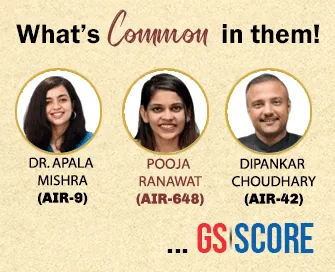

18th June 2025 (6 Topics)
Mains Issues
Context
Prime Minister Narendra Modi is participating in the G7 Outreach Summit in Canada (June 2025). During this visit, he is set to hold key bilateral meetings and highlight issues faced by the Global South.
G7 Summit and India’s Diplomatic Outreach
1. India’s Strategic Objectives at G7- Representation of Global South Priorities
- India has consistently raised concerns about how global conflicts (e.g., Ukraine war) disproportionately affect the Global South—particularly through disruptions in food, energy, and fertilizer supply chains.
- PM Modi reiterated India’s commitment to being a voice for these countries, especially in multilateral forums like the G20 and G7.
- Multilateral Engagement Amidst Geopolitical Flux
- India’s role as a bridge between East and West becomes critical amidst evolving alignments (e.g., U.S. interest in expanding G7 into G9 by including Russia and China).
- India’s strategic autonomy enables it to engage with conflicting powers—e.g., holding bilateral meetings with both Ukraine and upcoming with Russia.
- India’s Global Governance Advocacy
- India continues to push for reforms in global governance institutions (UNSC, WTO), positioning itself as a key stakeholder in shaping multipolarity.
- India–Germany & India–Italy Relations
- Discussions expected to focus on green hydrogen, Indo-Pacific cooperation, and enhanced technology transfer.
- Both countries are India’s key defence and trade partners within the EU.
- India–Canada Ties Amid Diplomatic Strain
- Bilateral meeting with PM Trudeau follows recent tensions over allegations of interference and support to extremist elements in Canada.
- India seeks to restore economic diplomacy while safeguarding sovereignty concerns.
- India–Ukraine Engagement
- Meeting with President Zelenskyy comes ahead of Russian President Putin’s proposed visit to India.
- India continues its balancing act—offering humanitarian assistance to Ukraine while maintaining its energy and defence ties with Russia.
- S. Disengagement and Power Rebalancing
- President Trump’s abrupt exit from the summit reflects waning American commitment to multilateralism.
- The proposal to include Russia and China in a possible "G9" shows G7’s crisis of relevance in a rapidly changing world.
- India’s Neutral Stance Amid Geopolitical Polarisation
- India’s non-alignment on Ukraine, participation in both Western-led summits and BRICS, and advocacy for the Global South enhances its credibility as a neutral negotiator.
- Role in Global Economic Resilience
- India’s participation at G7 reaffirms its position as an emerging economic pillar capable of contributing to debt restructuring, climate finance, and resilient supply chains.
Way Forward:
- Institutionalise South-South Cooperation: India can push for institutional mechanisms that formalise Global South’s agenda at platforms like the G7, G20, and BRICS+.
- Promote Multilateral Financial Equity: India must demand fairer climate finance, debt restructuring tools, and access to green technology for developing nations.
- Reinforce Strategic Autonomy: While engaging deeply with the West, India must avoid bloc alignments and continue engaging with Russia and China where interests align.
G7 (Group of Seven)1. Origin and Historical Evolution
2. Nature and Structure
3. Membership Criteria
4. Agenda and Priorities
|


Prelims Articles
Context
Hydraulic systems remain the backbone of heavy machinery and automated industrial operations. Recent technological advancements have incorporated sensors and digital monitoring systems into hydraulics, enhancing efficiency, performance, and predictive maintenance.
Hydraulics and Its Expanding Role in Industrial and Technological Infrastructure
1. Fundamental Principle of Hydraulics- Based on Pascal’s Law: Pressure applied to an incompressible fluid is transmitted equally in all directions.
- A small input force can generate a large output force if applied over a smaller area—enabling mechanical advantage.
- Pumps: Convert mechanical energy into hydraulic pressure (e.g., gear type, piston type).
- Pipes and Hoses: Transport pressurized oil to various points.
- Valves: Control flow, pressure, and direction (manually or electrically actuated).
- Actuators:
- Linear actuators: Hydraulic cylinders for pushing/pulling.
- Rotary actuators: Hydraulic motors for rotational tasks.
- Tanks and Filters: Store and purify hydraulic oil.
- Sensors/Switches: Enable automation, safety, and diagnostics.
- High power-to-weight ratio
- Smooth motion and better heat dissipation
- Precise control and automation readiness
- Reliability in high-load and variable environments
- Mobile Equipment: Cranes, excavators, aircraft landing gear.
- Stationary Equipment: Hydraulic presses, injection molding machines, wind turbines.
- Emerging Uses: Integration with IoT for real-time diagnostics and performance monitoring.
- Integration with sensors for pressure, flow, temperature monitoring.
- Data-driven predictive maintenance.
- Adaptation to environmental norms and efficiency optimization.
- Energy Efficiency: Current systems have only 30–40% efficiency.
- Environmental Compliance: Need for eco-friendly hydraulic oils.
- Future Developments:
- Electrically actuated hybrid systems for compact machinery.
- AI-enabled control for precision-heavy applications.
- Research into increasing efficiency beyond 40% using advanced materials and designs.


Prelims Articles
Context
The Cotton Corporation of India (CCI) has procured nearly 100 lakh bales of cotton at Minimum Support Price (MSP) in the 2024–25 cotton season, with disbursements amounting to approximately ?37,500 crore. Concurrently, cotton imports surged by over 130%, raising concerns about domestic pricing and the competitiveness of Indian cotton in international markets.
About Cotton Corporation of India (CCI):
- Establishment: 1970, under the Ministry of Textiles.
- Headquarters: Navi Mumbai.
- Mandate: To protect the interests of cotton farmers by purchasing kapas (raw cotton) at MSP; ensure price stability and supply management.
- Functions:
- MSP operations as per Government of India directives.
- Commercial operations in open market when prices are above MSP.
- Balancing demand-supply and quality assurance in the cotton trade.
Current Developments in Cotton Sector:
- Cotton Procurement (2024-25 Season):
- CCI procured 100 lakh bales at MSP.
- Sold 35 lakh bales to textile mills and traders.
- Operated 500+ procurement centres since October 2024.
- Expenditure on MSP procurement: ?37,500 crore.
- MSP for next season (2025-26) hiked by 8%, implying potentially higher procurement costs.
- Import Trends:
- 133% increase in import quantity in May 2025 vs May 2024.
- 131% increase in import value in April–May 2025 vs same period in 2024.
- Reasons:
- International cotton is ~8% cheaper than Indian cotton.
- 11% import duty still leaves foreign cotton 1–2% cheaper.
- Impact: Reduced competitiveness of Indian textile mills in global markets.


Editorials
Context
According to the Economic Survey 2025-26, India's pension assets comprise only 17% of GDP—significantly below the 80% benchmark of advanced economies. With only 12% of the workforce under formal pension coverage and India's old-age dependency ratio projected to rise to 30% by 2050, the need for a comprehensive and inclusive pension framework has become urgent.
Coverage Crisis in India’s Pension Ecosystem
- Low Coverage & Inequality: Only around 12% of the Indian workforce is covered under formal pension schemes. While public and organised private sector workers have access to multiple protections, the informal sector is left to rely on voluntary schemes like the NPS and APY, which cover merely 5.3% of the population.
- Informal Sector Exclusion: Despite comprising 85% of India’s workforce and contributing over 50% of GDP, informal and gig economy workers remain excluded, posing a future financial and social security risk amid a rising old-age dependency ratio.
- Fragmentation of Pension Schemes: Multiple uncoordinated pension programs—some contributory, some aggregator-supported—have created a convoluted and inefficient system, in stark contrast to structured tiered models in countries like Japan and New Zealand.
Challenges of Sensitisation and Accessibility
- Lack of Financial Literacy: Voluntary participation is constrained by low awareness; with financial education largely missing, informal workers remain unaware of long-term retirement needs and pension products.
- Global Best Practices for Awareness: Countries like Australia have integrated superannuation awareness in school curricula, while the UK and Netherlands have implemented default enrolment and annual benefit disclosures to build trust and understanding.
- Accessibility through Digitisation: Nigeria’s digital infrastructure for pension registration stands as a model for India to emulate, ensuring easy and wide outreach even in rural and informal segments.
Ensuring Sustainability and a Tiered Reform Model
- Weak Pension Fund Adequacy: The Mercer CFA Global Pension Index 2024 assigned India a score of only 44%, with declining adequacy. Without diversification into private pension mechanisms, long-term liquidity and financial sustainability remain vulnerable.
- Tiered Framework Proposal: A unified pension system should consist of:
- Tier 1: Mandatory flat-rate pension for all
- Tier 2: Employer-based contributory schemes (opt-out model)
- Tier 3: Voluntary savings supported by tax benefits and market returns
- Governance and Oversight Mechanisms: Standardised annual disclosures, robust investment norms, and centralized regulation are critical to instil public trust, ensure fund performance, and meet India’s demographic and developmental needs.
Practice Question:
Q. "India’s pension system is fragmented, underfunded, and largely exclusionary towards its informal workforce. In light of global best practices, critically evaluate the need for a tiered and inclusive pension reform framework in India. Suggest suitable institutional and policy measures to ensure scalability, sustainability, and coverage expansion."


Editorials
Context
In a significant policy shift, the Government of India has allowed scientific institutions to bypass the Government e-Marketplace (GEM) for procuring research materials and equipment. This move has been hailed as “revolutionary” by the scientific community for restoring institutional autonomy and easing critical bottlenecks in India's research ecosystem, particularly post the 2020 mandate requiring all government purchases through GEM.
Limitations of GEM for Scientific Research
- GEM’s Lowest-Cost Mandate: The GEM system mandates procurement based on the lowest cost, ignoring quality specifications vital to scientific research. For instance, even basic lab-grade sodium chloride varies in purity—crucial for reproducibility in experiments.
- Loss of Experimental Fidelity: Research demands fidelity to original materials for reproducibility. Forced substitutions due to GEM constraints lead to failed experiments, wastage of time and resources, and compromised research outcomes.
- Incompatibility with Specialised Needs: Scientific research often requires customised, precision equipment (e.g., biological molecules, diamonds, or lab tools) unavailable or unsuitable via GEM vendors, underlining the policy’s mismatch with research demands.
Systemic Impediments to Scientific Autonomy
- Known Industrial Limitations Ignored: India’s weak manufacturing base for high-end scientific instruments made it foreseeable that a blanket GEM policy would hinder research. Despite this, GEM was made mandatory in 2020.
- Hammer-and-Nail Policy Approach: The GEM procurement regime treated all purchases with a one-size-fits-all approach, equating lab tools with generic office supplies, ignoring the specialised nature of research inputs.
- Consequences of Delayed Realisation: The delay in acknowledging GEM’s shortcomings has caused cumulative losses—delayed research, reduced innovation output, and decreased global competitiveness in R&D.
Restoring Institutional Autonomy and Vision
- Reinstating Procurement Autonomy: The exemption re-empowers institutions to choose vendors based on reliability, quality, and relevance—factors fundamental to meaningful scientific progress and international collaboration.
- Science Ministries Led by Scientists: Unlike other ministries run by bureaucrats, India’s science ministries are helmed by domain experts—a legacy that recognises science as a discipline needing autonomy, not routine control.
- Nurturing Science for Nation-Building: The policy correction reflects India’s foundational belief that science must be nurtured beyond administrative constraints if it is to contribute meaningfully to national development and global innovation.
Practice Question:
Q. “The Government e-Marketplace (GEM) aimed to promote transparency and indigenisation in public procurement, yet it posed critical challenges to India’s scientific research ecosystem.” Critically examine the rationale behind exempting scientific institutions from GEM procurement norms. Suggest institutional safeguards to balance transparency with research autonomy.


Editorials
Context
On June 12, 2025, Air India flight AI171 operating a Boeing 787 Dreamliner crashed during take-off from Ahmedabad Airport, killing all but one passenger. The incident has triggered a wave of unverified media narratives, while experts urge reliance on black box data (DFDR & CVR) and international investigation agencies for factual clarity.
Technical Parameters and Suspected Sequence of Events
- Aircraft Performance vs. Environmental Conditions: Ahmedabad’s Runway 23, measuring 3,505 metres, had an effective length of only 2,764 metres on June 12 due to high temperatures (37°C) and atmospheric pressure (1000 hPa)—significantly affecting aircraft engine thrust and lift performance.
- Indications of Engine Failure During Take-Off: CCTV footage shows a rightward yaw of the aircraft immediately after nose-lift, suggesting engine failure. The take-off occurred near the runway end, and no retraction of landing gear was observed, increasing drag and possibly leading to stall.
- Deployment of Ram Air Turbine (RAT): Eyewitness accounts and video evidence suggest activation of RAT—a backup power source typically triggered during dual engine failure, pointing toward a serious power systems malfunction in early flight stages.
Comparative Precedent and Decision-Making Complexity
- Historical Parallel: IC571 Incident (1986): The Indian Airlines IC571 accident under similar conditions was due to a bird strike and engine vibration post-rotation; although the aircraft overran the runway, all 196 lives were saved. This provides a critical safety case study.
- Critical Decision Point: V1 Speed Consideration: The take-off safety speed (V1) is a decisive threshold; rejecting take-off post-V1 is risky. The AI171 captain had reached near the end of the runway before lifting off, indicating delayed rotation and a Hobson's choice in a critical moment.
- Role of Excess Weight and Hot Weather: Anecdotal evidence suggests excess cabin baggage, possibly adding 2 tons extra weight, combined with high temperature, further degraded engine performance—contributing to the unusually long take-off run.
Institutional Response, Media Ethics, and Public Trust
- Premature Media Theorization: Sensationalist coverage and speculative commentary on YouTube and social media platforms have spread misinformation, creating panic among air travellers without access to verified technical findings.
- Delayed Official Transparency in India: Although the DFDR and CVR have been recovered, India’s investigative bureaucracy delays data release, impeding timely analysis. Collaboration with NTSB (USA) and AAIB (UK) is underway for an authoritative report.
- Reaffirming Safety Record of the Boeing 787: The Boeing 787 Dreamliner, introduced in 2011, has an excellent 14-year safety record. Despite prior issues with the 737 MAX, the Dreamliner remains a highly trusted long-haul aircraft
Practice Question:
Q. The increasing role of digital media in aviation accident reporting raises concerns about public panic and misinformation. Critically examine the implications of premature media narratives in the aftermath of aviation disasters, with special reference to AI171 (2025). Also suggest institutional measures to ensure factual accuracy without compromising investigation confidentiality. (250 words)




